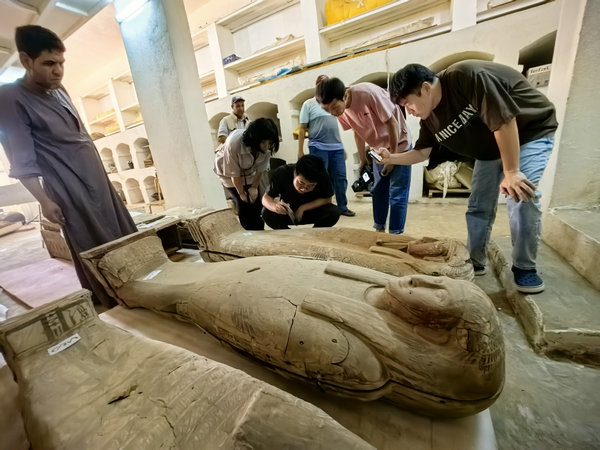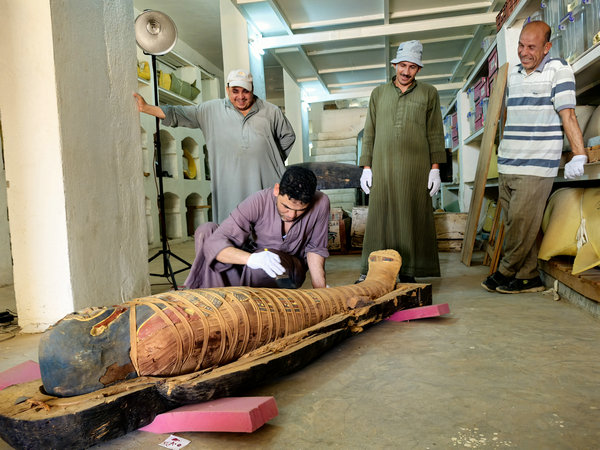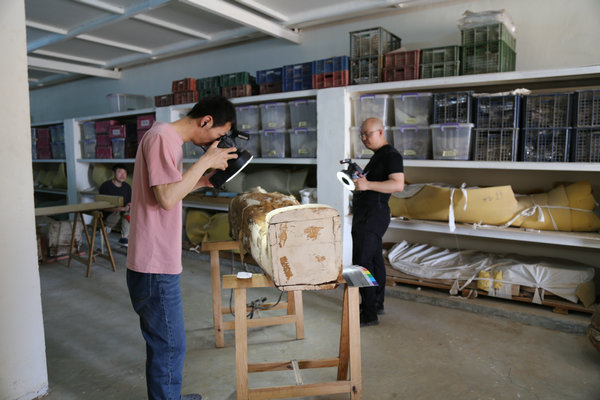Chinese, Egyptians jointly research, digitalize mummified wooden coffins

China-Egypt Joint Investigation, Research and Digitalization Project on Ancient Egyptian Antiquities, a package of cooperation projects mainly about digital scanning, photographing, sorting and research of more than 1,000 mummified wooden coffins excavated in Saqqara, Egypt, has been going on since late May, Shanghai International Studies University said on Monday.
All the wooden coffins were excavated by the archaeological team of the Supreme Council of Antiquities of Egypt at the Bubasteion Site in Northern Saqqara, which is adjacent to Cairo, capital of Egypt, after 2018.
The project was jointly undertaken by the Shanghai university and the Supreme Council of Antiquities of Egypt, and jointly carried out by the university's World Art history Institute (WAI), the Saqqara Archeological Team and relevant teams from Egypt. It was led by Xue Jiang, an assistant researcher from WAI.

The team said their final research results will be jointly released to the world in Chinese, Arabic and English.
It is the first time that China has carried out such a large-scale basic cultural project outside the country, according to WAI. And the effort will provide experience and demonstration for the implementation of follow-up projects, such as the upcoming Database on Ancient Greek/Gandharan Images, Literature, and Archaeological Artifacts, which is affiliated to the World Civilizations Research Database.
When visiting the Shanghai university in May, M. Ismail Khaled, general secretary Supreme Council of Antiquities expressed his full support for the progress of the project. He said he believed the project is an innovation in the mechanism of mutual learning and exchange between China and Egypt as ancient civilizations.

Zhu Qingsheng, initiator of the project, said that in the era of digital technology, it is necessary to allow such cultural relics obtain a more comprehensive and in-depth analysis through technical means and become a part of the field of public knowledge.
"This marked an important beginning for China and Egypt to continue their cultural traditions, conduct dialogue among civilizations on an equal footing, and carry out international cultural cooperation in a new form," said Zhu, who is also director of the Shanghai university's WAI and a professor of history at Peking University in Beijing.
"It is a new initiative of academic strategy and pattern for a Chinese university to enter an Egyptian archaeological site for the first time with new image theory, database concept and micro-trace scanning to collect and sort out original materials," he said.
-- Sent from my Linux system.




No comments:
Post a Comment